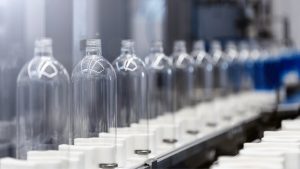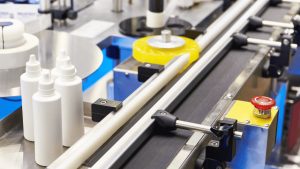What is Pet Bottle
Menu Konten
>> Composition and Manufacturing
● Characteristics of PET Bottles
● Case Studies and Real-world Applications
In the modern world, the ubiquitous presence of polyethylene terephthalate (PET) bottles is undeniable. PET bottles have become an integral part of our daily lives from the water we drink to the beverages we consume. This article aims to provide a thorough understanding of PET bottles, covering their composition, manufacturing process, benefits, environmental impact, challenges, and prospects. With a character count exceeding 2500, this comprehensive exploration will delve into the multifaceted aspects of PET bottles.
Understanding PET Bottles
Composition and Manufacturing
PET bottles are made from polyethylene terephthalate, a type of thermoplastic polymer resin. The manufacturing process involves several key steps:
1. Polymerization: Ethylene glycol and terephthalic acid are combined in a process called polymerization to form PET pellets. These pellets are the raw material for creating PET bottles.
2. Extrusion: The PET pellets are heated and extruded into a continuous strand called a preform. This preform is essentially a solid, cylindrical shape that will later be blown into a bottle.
3. Blow Molding: The preform is heated again and then blown into the desired bottle shape using compressed air. This process, known as blow molding, ensures that the PET takes on the desired shape and thickness.
Characteristics of PET Bottles
PET bottles possess several notable characteristics that have made them a preferred choice in the packaging industry:
1. Lightweight: PET bottles are significantly lighter than glass, reducing transportation costs and carbon emissions.
2. Transparency: They offer excellent clarity, allowing consumers to see the product inside, which is particularly important for beverages.
3. Strength and Durability: Despite their lightweight nature, PET bottles are strong and resistant to breakage, making them safer for consumers and less prone to damage during transportation.4. Recyclability: PET is one of the most recycled plastics globally, which helps in reducing waste and conserving resources.
Benefits of PET Bottles
Environmental Impact
While PET bottles have transformed the packaging industry, their environmental impact is a subject of considerable debate. Here are some key points to consider:
1. Energy Consumption: The production of PET bottles requires less energy compared to glass bottles, resulting in lower greenhouse gas emissions.
2. Recycling: PET is highly recyclable, and advancements in recycling technology have improved the efficiency of turning PET waste into new products. However, the recycling rate for PET bottles is still relatively low, highlighting the need for increased consumer awareness and infrastructure development.
3. Biodegradability: Unlike some other plastics, PET does not readily biodegrade in the environment. This characteristic necessitates proper disposal and recycling to mitigate environmental harm.
Economic Benefits
From an economic perspective, PET bottles offer several advantages:
1. Cost-Effectiveness: The manufacturing process for PET bottles is less expensive than that of glass, making them a cost-effective choice for producers.
2. Market Demand: The global demand for PET bottles continues to grow, driven by increasing consumption of packaged beverages and consumer goods. This demand creates jobs and stimulates economic activity in the manufacturing and recycling sectors.
Challenges and Solutions
Plastic Waste Crisis
One of the most pressing challenges associated with PET bottles is the plastic waste crisis. The proliferation of single-use PET bottles has led to significant environmental concerns, including ocean pollution and harm to wildlife. Addressing this issue requires a multifaceted approach:
1. Increased Recycling Rates: Enhancing recycling infrastructure and encouraging consumers to recycle PET bottles can significantly reduce waste. Governments and industry stakeholders are investing in recycling programs and technologies to improve collection and processing rates.
2. Innovation in Packaging: Companies are exploring alternative packaging solutions, such as biodegradable materials and refillable containers, to reduce the reliance on single-use PET bottles.
3. Consumer Education: Raising awareness about recycling and sustainable consumption is crucial. Campaigns and initiatives aimed at educating consumers can foster responsible behaviour and reduce waste.
Regulatory Framework
Governments around the world are implementing regulations to manage the production and disposal of PET bottles. These regulations include:
1. Bans and Restrictions: Some jurisdictions have imposed bans or restrictions on single-use plastics, including PET bottles, to combat pollution and promote sustainable alternatives.
2. Extended Producer Responsibility (EPR): EPR policies hold producers accountable for the end-of-life management of their products, encouraging them to design more sustainable packaging and invest in recycling infrastructure.
The Future of PET Bottles
Technological Advancements
Advancements in technology are poised to shape the future of PET bottles:
1. Biobased PET: Researchers are developing PET bottles made from bio-based materials, such as plant-derived sources, which can reduce reliance on fossil fuels and potentially enhance biodegradability.
2. Advanced Recycling Techniques: Innovations in recycling technology, such as chemical recycling, can break down PET waste into its constituent monomers, allowing for the creation of new, high-quality PET products.
3. Smart Packaging: Incorporating smart technologies, such as sensors and tracking devices, into PET bottles can improve product safety, reduce waste, and enhance consumer experience.
Consumer Trends
Consumer preferences are evolving, with a growing emphasis on sustainability and environmental responsibility. This shift is influencing the packaging industry:
1. Demand for Sustainable Packaging: Consumers are increasingly seeking products packaged in sustainable materials, driving companies to innovate and adopt more eco-friendly packaging solutions.
2. Preference for Refillable and Reusable Containers: The popularity of refillable and reusable bottles is on the rise, reflecting a broader movement towards reducing single-use plastics.
Case Studies and Real-world Applications
To provide a more concrete understanding of PET bottles, let’s explore some real-world applications and case studies:
1. Beverage Industry: The beverage industry is one of the largest consumers of PET bottles. Companies like Coca-Cola and PepsiCo have made significant strides in improving the sustainability of their packaging. For example, Coca-Cola’s “World Without Waste” initiative aims to collect and recycle the equivalent of every bottle or can they sell by 2030.
2. Personal Care Products: PET bottles are also widely used in the personal care industry for packaging products like shampoos, lotions, and detergents. Companies like Unilever and Procter & Gamble are investing in sustainable packaging solutions, including the use of recycled PET and biodegradable materials.
3. Food Packaging: In the food industry, PET bottles are used for packaging items like condiments, oils, and sauces. Companies are exploring innovative solutions, such as refillable containers and biodegradable alternatives, to reduce their environmental impact.
Conclusion
PET bottles have undeniably transformed the packaging industry, offering numerous benefits in terms of convenience, cost-effectiveness, and functionality. However, the environmental challenges associated with PET bottles underscore the need for concerted efforts to improve recycling rates, innovate sustainable packaging solutions, and educate consumers. By addressing these challenges, the future of PET bottles can be both sustainable and responsible, ensuring that this versatile material continues to play a vital role in meeting the packaging needs of a growing global population.In conclusion, PET bottles are a remarkable innovation in the world of packaging, offering a blend of practicality, cost-effectiveness, and versatility. While they present environmental challenges, ongoing advancements in technology and consumer awareness are paving the way for a more sustainable future. By embracing recycling, innovation, and responsible consumption, we can ensure that PET bottles continue to serve their purpose while minimizing their environmental footprint.
